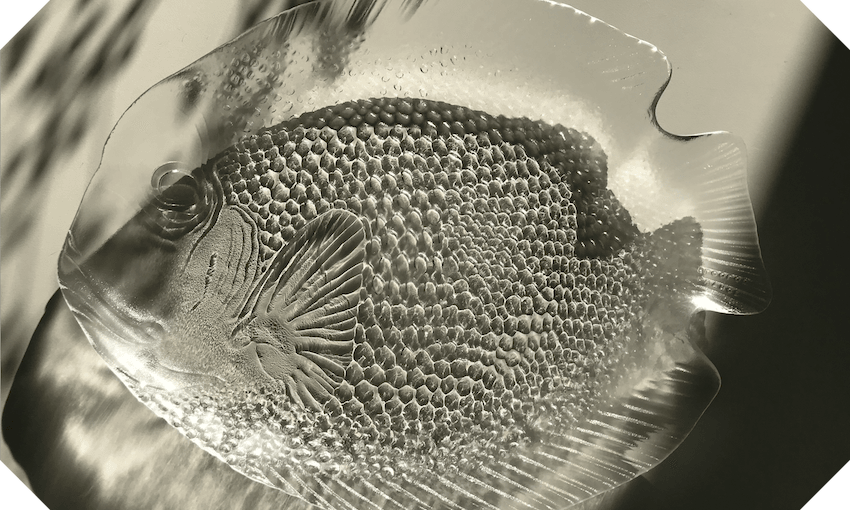They’re perfectly kooky yet extremely durable, and they’ve become a a mainstay at trendy restaurants across the country. Charlotte Muru-Lanning explains why she’ll never tire of the Arcoroc fish plate.
This is an excerpt from our weekly food newsletter, The Boil Up.
When I sit down to write The Boil Up, inspiration is usually relatively easy to find. Even when I don’t have an opinion that’s been creeping around my thoughts for a few days, desperately waiting to be put into writing, I’ve often eaten something that sparks some kind of aha moment, or that’s so delicious I just need to tell you about it. But it’s been a short, busy week for me and I seem to have picked up a cold somewhere along the way too.
Reflecting on what I’ve eaten this week – leftover mapo tofu, instant noodles with an egg, an 8pm tinned baked beans dinner, chips and gherkin dip – it’s safe to say I’m running as low on exciting culinary inspiration as I am on necessary vitamins and minerals. Sometimes the metaphorical plate is completely empty, and that’s OK.
But on the topic of plates, I did want to briefly share my appreciation for the Arcoroc fish or “poisson” plate. You’ll know them when you see them: transparent glass platters in the shape of whole fish – scales, tails and all. A creature of the sea crystallised. If you were married in the 1980s there’s a good chance you acquired a set of them as a wedding gift and then, as far as I can tell by the sheer number of these plates at op shops, eventually ditched them. And if you’ve found yourself in one or two distinctly “cool” establishments over the past five years, you’ve probably come across a dish served upon one.
They’re noticeably common in casual eateries that offer small plates, good olives and natural wines on the menu. In all their variety of sizes, these eccentric retro plates will often be streaked with strips of raw fish, fresh herbs and pickled radish, smothered by a bed of crushed ice and shucked oysters, or overlaid with a kaleidoscope of crudités. Kai that is light, zingy, colourful, and often sourced from the sea is where these fish platters really shine.
The French roots of Arcoroc – the brand that produced the fish plate along with the utilitarian brown glass mugs we all know from the marae and staffroom – could perhaps help to explain their renaissance in Aotearoa. Their local fashionability seems to have accompanied the rise of French-influenced neo bistros over the last five or so years. Established in 1958, Arcoroc makes hard-wearing glassware designed to be used intensively in industrial settings like bars, hotels and restaurants, and these fish plates went into production in the 1970s. But Arcoroc weren’t the first to do it – fish plates have appeared throughout history, with Hellenistic Greeks during the fourth century BC creating footed plates painted with fish, and there are painted fish plates dotted throughout the history of Chinese pottery too. American company Atterbury Glass Co. produced milky glass plates in the 1870s, and German brand Waechtersbach made fish-shaped serveware out of porcelain in the early 1900s. It turns out people have been into fish-shaped plates for ages.
But through no fault of their own, Arcoroc fish plates are now so ubiquitous they could easily be added to the heap of tired restaurant trends, overworked till they become a culinary cliché and then cast aside. Perhaps to some they’re already in this category, but to me they’ll forever be charming. I love how deceivingly delicate they look, I love the sound of clinking knives and forks against them, and I love the calm composure of the glass-etched fish, the species of which I’m altogether unsure.
With their ethereal, zoomorphic quality, fish plates offer a type of whimsy that feels hard to come by these days. This isn’t intended as a dramatic tribute. Rather it’s a small, quiet nod of appreciation to a plate that makes everything placed upon it a little more special.




















Discussion about this post